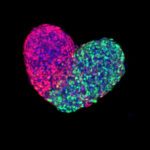Link to Pubmed [PMID] – 34772813
Link to DOI – e210901111810.1073/pnas.2109011118
Proc Natl Acad Sci U S A 2021 11; 118(46):
In the regulation of gene expression, information of relevance to the organism is represented by the concentrations of transcription factor molecules. To extract this information the cell must effectively “measure” these concentrations, but there are physical limits to the precision of these measurements. We use the gap gene network in the early fly embryo as an example of the tradeoff between the precision of concentration measurements and the transmission of relevant information. For thresholded measurements we find that lower thresholds are more important, and fine tuning is not required for near-optimal information transmission. We then consider general sensors, constrained only by a limit on their information capacity, and find that thresholded sensors can approach true information theoretic optima. The information theoretic approach allows us to identify the optimal sensor for the entire gap gene network and to argue that the physical limitations of sensing necessitate the observed multiplicity of enhancer elements, with sensitivities to combinations rather than single transcription factors.

